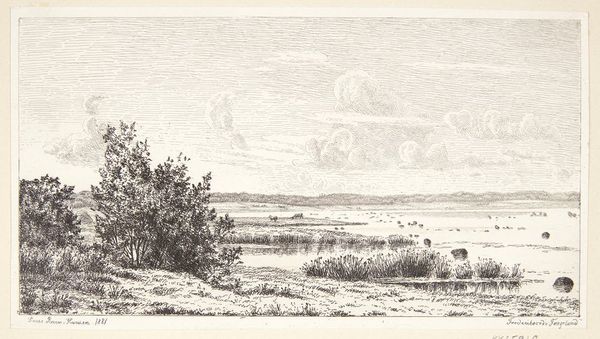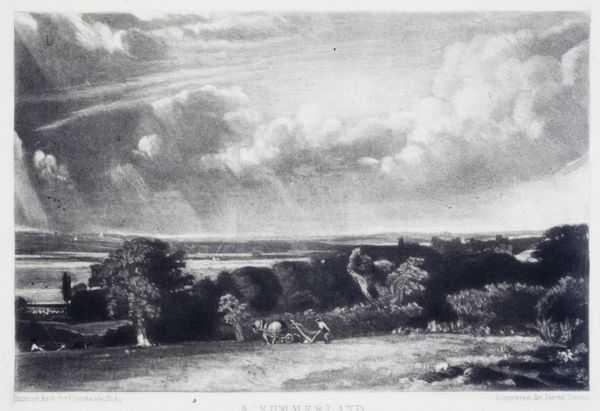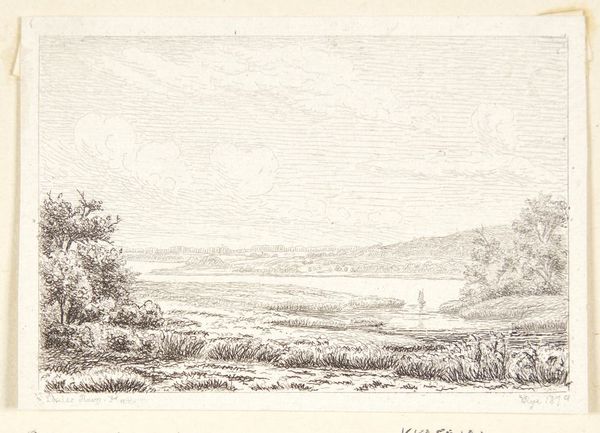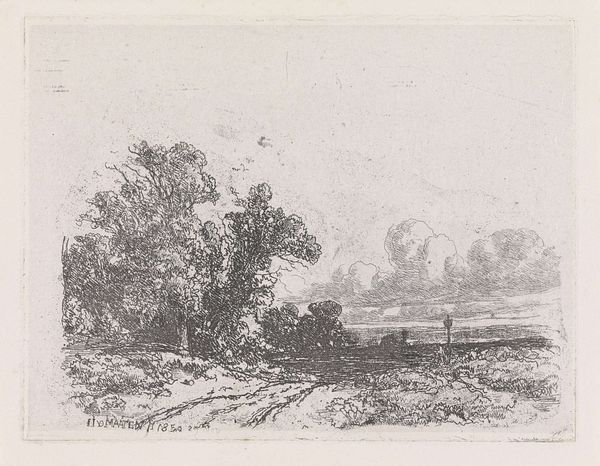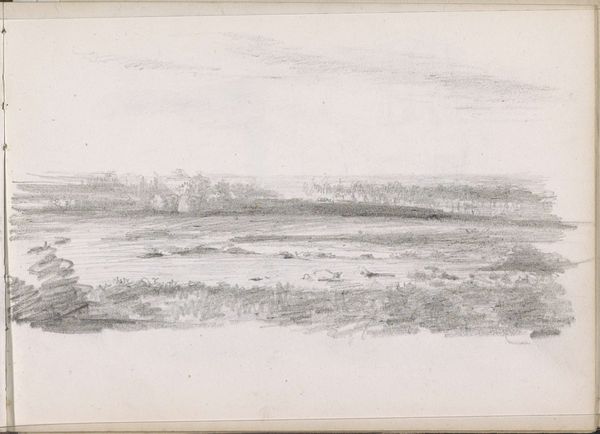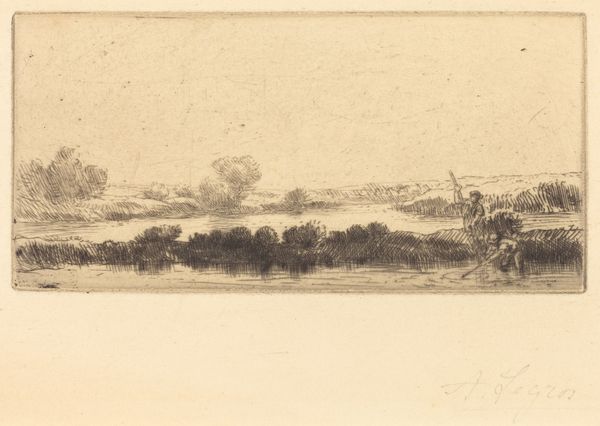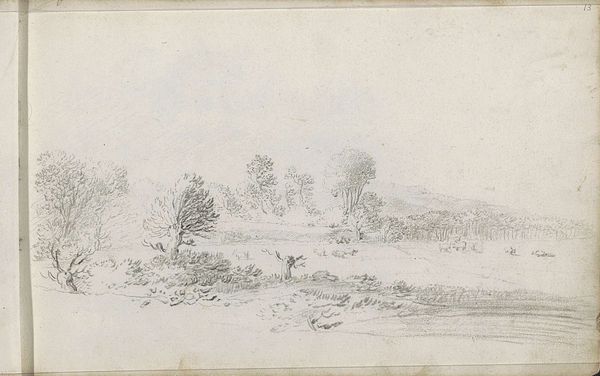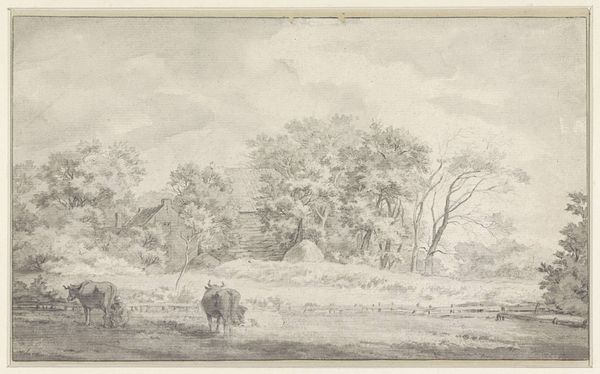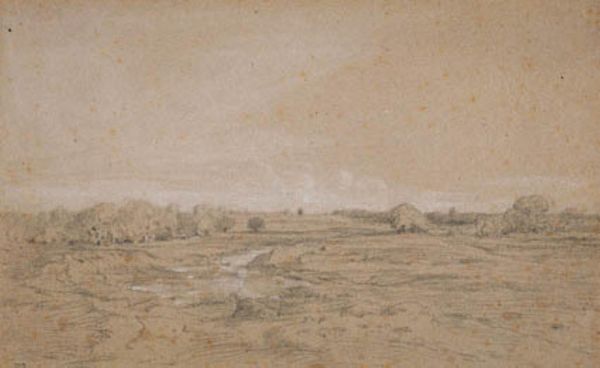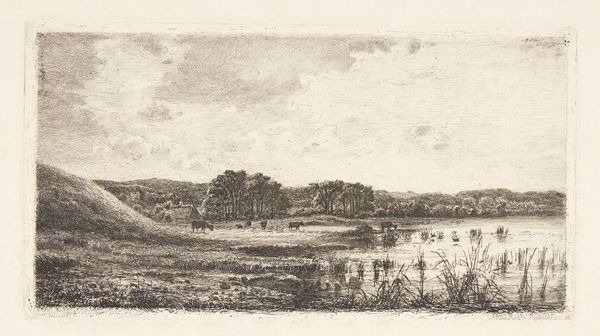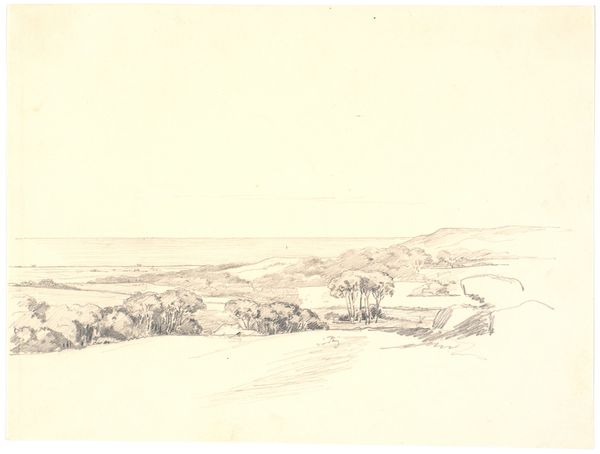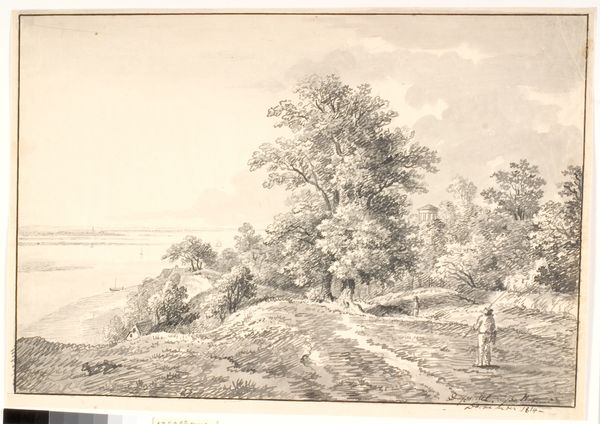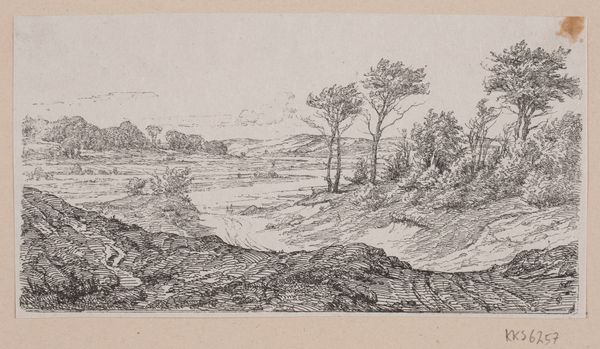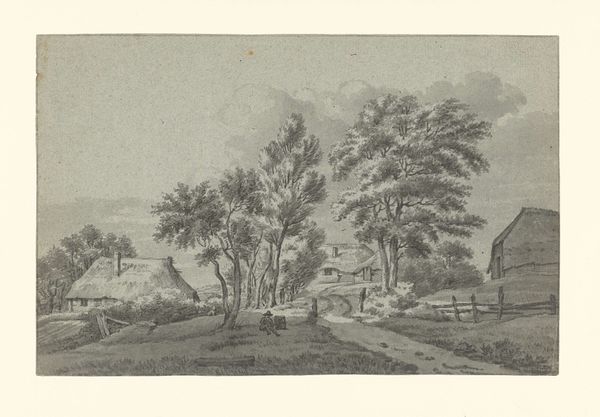
drawing, ink, pencil
#
pen and ink
#
drawing
#
landscape
#
ink
#
romanticism
#
pencil
Dimensions: 180 mm (height) x 264 mm (width) (bladmaal), 164 mm (height) x 246 mm (width) (billedmaal)
Dankvart Dreyer made this graphite drawing of a rye field in Funen, Denmark, sometime in the first half of the 19th century. It’s a vision of rural harmony and the quiet productivity of the land. But consider the social context: Dreyer came of age during Denmark’s Golden Age, when artists turned to the local landscape for inspiration. This artistic focus coincided with significant social and economic changes. Following the Napoleonic Wars, Denmark faced economic hardship and national identity became a crucial issue. Art, supported by institutions like the Royal Danish Academy of Fine Arts, played a key role in shaping a sense of national pride. Dreyer’s detailed rendering of the Danish landscape, with its subtle light and careful composition, speaks to the beauty and value of the Danish countryside, a vision of national identity rooted in the land. To fully appreciate this work, we can consult agricultural records from the period, study the cultural politics of 19th-century Denmark, and explore the patronage networks that supported artists like Dreyer. The meaning of art is always contingent on its social and institutional context.
Comments
No comments
Be the first to comment and join the conversation on the ultimate creative platform.
